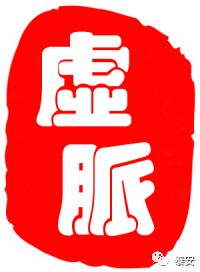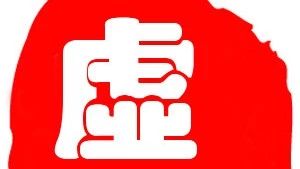
“Body Condition Poem”
When lifted, it is slow and large; when pressed, it is soft, resembling an empty valley.
Do not mistake the kāo (floating) pulse for a single case; the kāo pulse can be large and floating like a green onion.
“Main Disease Poem”
The pulse is weak, and the body is hot due to summer heat; spontaneous sweating, palpitations, and anxiety are common.
Fever due to Yin deficiency must be treated early; nourishing the yíng (nutritive Qi) and benefiting qì (Qi) should not be delayed.
“Brief Explanation” The xū (deficient) pulse is a combination of multiple simple pulse patterns. In terms of pulse position, it includes three different depths: lifting, searching, and pressing. A light touch indicates lifting, while pressing down to the bones indicates pressing; the area between lifting and pressing is the searching position. For the xū pulse, lifting can be felt, and the pulse is slow and large, while the searching and pressing positions seem weak, indicating a faint pulse. Thus, it is said that “the pulse resembles an empty valley.” Overall, the xū pulse is very similar to the kāo pulse, with the difference being that the lifting position of the kāo pulse is slightly stronger compared to the searching and pressing positions (though overall it is also weak), and the kāo pulse does not exhibit abnormal pulse rate.
This is a typical representation of the xū pulse. In actual clinical practice, variations such as small and weak, or deep and weak pulses may appear.
The xū pulse primarily manifests as weakness, with no solid representation, yet it may show signs of external dispersion, requiring some convergence during tonification. It often indicates blood deficiency and fluid insufficiency; fluids and blood belong to Yin. If there is body heat, it is mostly due to summer heat injuring the body. Summer heat is a Yang pathogen that opens and disperses the pores. It is said, “Yang added to Yin is called sweat.” Sweating first injures Yin, then depletes Qi. When Yin is injured, use Wang’s Qing Shu Yi Qi Decoction; when Qi is depleted, use Shen Dong Yuan’s Qing Shu Yi Qi Decoction. The six positions of the pulse on both hands can individually exhibit the xū pulse, and careful inquiry is necessary during diagnosis. For example, if the left cun position shows xū, it may indicate insufficient heart blood, leading to symptoms such as palpitations, anxiety, shallow sleep, and forgetfulness. Consider using Si Wu Tang with Jujube kernel (zao ren), Biota seed (bai zi ren), Polygala (fu shen), Asparagus (tian dong), and Schisandra (wu wei zi). If the right guan position shows xū, it may indicate reduced appetite, shallow stomach, slightly dry stools, and thin tongue coating; consider using Si Jun Zi Tang combined with Chinese yam (shan yao), or even Dendrobium (shi hu) in severe cases. Diseases have myriad changes, and the pulse reflects countless variations; the prescriptions must respond accordingly.

